The document proposes adapting the Old Chinese Temple in Johor Bahru, Malaysia into a Cultural Learning Centre. It begins with an introduction to the site's history and a dilapidation survey identifying defects like peeling paint and mould. The proposal is to convert vacant spaces into a communal kitchen, makerspaces for crafts workshops, and a digital gallery to promote Chinese culture while preserving the prayer hall. The adaptive reuse aims to connect older and younger generations and different communities through learning traditional arts and crafts at the temple.

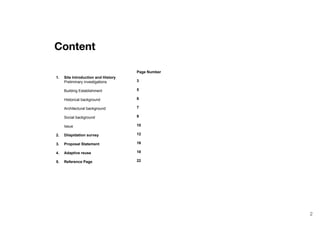
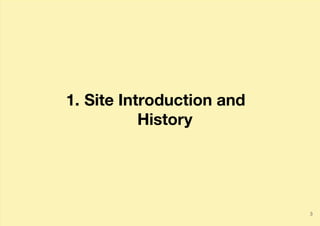

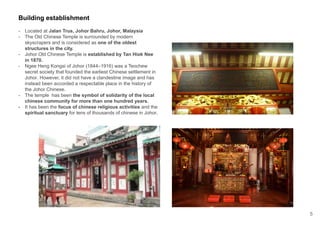








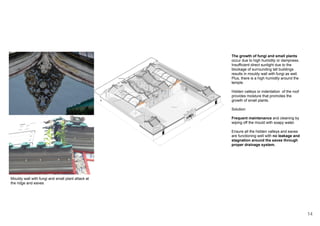



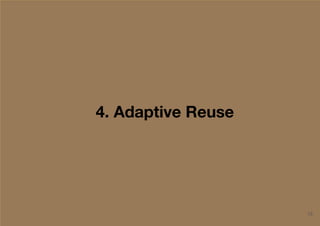
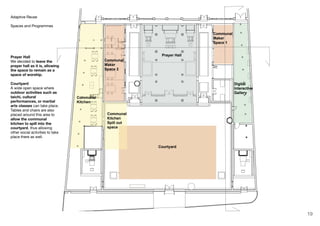


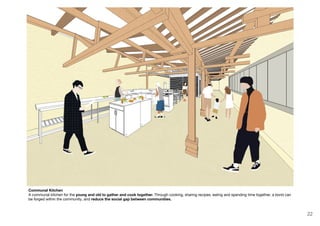
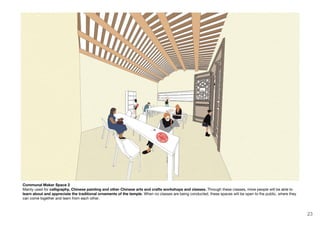

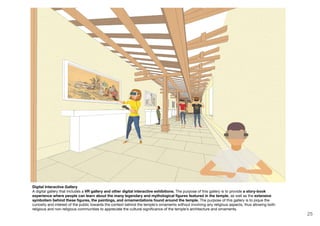

![References
Nurul Nadia.,&Md Azree. (2014). General Building Defects: Causes, Symptoms and Remedial Work.
European Journal of Technology and Design, 3(1), 4-14. doi: 10.13187/issn.2310-0133
The Guardian (2010). Patch peeling paint. (Website) Retrieved from
https://www.theguardian.com/lifeandstyle/2010/jan/18/patch-peeling-paint.
"Living in Johor [Johor Old Chinese Temple]". Crescendo International College. Archived from the original
on 8 March 2019. Retrieved 8 March 2019.
Peggy Loh (4 April 2016). "Bonded in tradition". New Straits Times. Retrieved 8 March 2019.
"柔佛古庙历史简介" [Introduction to the history of Johor Temple] (in Chinese). JB Tiong-Hua. Archived
from the original on 17 September 2007. Retrieved 1 October 2007.
"Johor carves history with 300,000 crowd in Chingay Festival". New Straits Times. 29 February 2016.
Retrieved 8 March 2019.
27](https://image.slidesharecdn.com/adaptivereuse-temple1-191218131348/85/PROPOSAL-FOR-ADAPTIVE-REUSE-27-320.jpg)